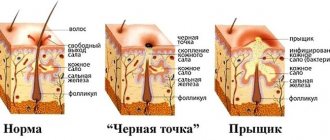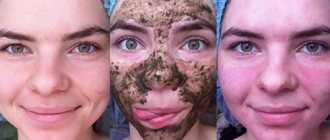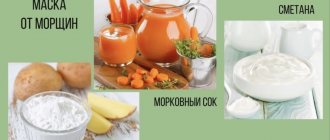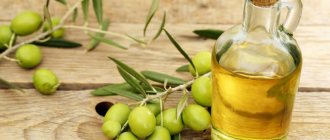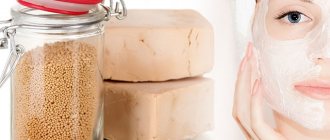Almost all women in Japan look younger than their age. On the Internet you can see a lot of photographs of supposedly “young” Japanese women, and next to the indicated real age. Sometimes these numbers are amazing and it’s hard to understand how Japanese women manage to maintain their youth and beauty. Answer post: Japanese masks on a natural basis.
From any manufacturer you can find both high-quality and not so good cosmetics. But it is in high-quality products that the Japanese give preference exclusively to natural ingredients, placing a taboo on dyes and chemical components. Another secret of Japanese masks is age-old beauty recipes and the use of those products that grow in their climatic zone and, of course, the use of collagen and various acids. Let's learn more about the best Japanese masks.
Japanese face mask with hyaluronic acid
The Japanese cosmetics industry provides a wide range of hyaluronic acid face masks. They are in great demand, as hyaluronic acid thoroughly and effectively removes toxins from the skin, removes various age spots, makes the skin breathe and resist viruses and infections.
The most popular among Russian women has become the Japanese mask with hyaluronic acid Japan Gals Pure 5 Essential. The sealed packaging allows you to store the masks in the refrigerator (so they will last for a long time). To prevent infection with your hands, tweezers are included in the kit. The mask fits comfortably to the face and is well absorbed. You need to walk with it for about 10 minutes. Suitable for any skin type and effectively combats imperfections.
Why did people wear medical masks in Asia even before the COVID-19 pandemic?
In Asian countries, it was customary to wear medical masks in everyday life long before the COVID-19 pandemic. And after the SARS outbreak in 2002 and the bird flu scare in 2006, the practice spread to Asian communities around the world, although doctors have repeatedly said that cloth masks do not protect against viruses. Probably, after the COVID-19 pandemic, Europeans will also wear masks. We translated Quartz's material about the Asian habit of wearing medical masks on the street.
The tradition of wearing masks began in Japan at the beginning of the 20th century, when the Spanish flu epidemic of 1918 killed between 20 and 40 million people worldwide - more than in the First World War. The disease also affected Asian countries, especially India, where 5% of the population died from the Spanish flu. People covered their faces with scarves, veils and masks, although this was not a very effective means of protection against the disease.
Spanish flu victims at the emergency hospital at Camp Funston, a subdivision of Fort Riley in Kansas, 1918
Chinese workers, probably 1920s
Four years after the Spanish flu epidemic, in 1923, the Great Kanto Earthquake occurred in Japan. It sparked fires that destroyed about 600 thousand houses in the most populated part of the country. Clouds of ash and smoke did not clear for several weeks after the disaster. In Tokyo and Yokohama, masks have become a common accessory to protect against ash. The second global influenza epidemic in 1934 only strengthened the Japanese love of masks. In winter, they were worn constantly, mainly because of traditional Japanese politeness: those who suffered from a cold wore masks so as not to infect others.
Aftermath of the Great Kanto Earthquake of 1923
Then, in the 1950s, rapid industrial growth in post-war Japan began causing widespread air pollution. Excess carbon dioxide in the air caused the Japanese cedar, an evergreen plant with abundant pollen, to bloom wildly, causing hay fever. Wearing masks has evolved from a seasonal precaution to a year-round habit. As of 2014, the Japanese annually spent 230 million US dollars (about 17 billion rubles) on surgical masks. Neighboring countries suffering from environmental problems, especially China and Korea, have adopted this practice.
A masked woman and child walk along a rubble-strewn avenue in Ishinomaki City, Miyagi Prefecture, after the 2011 Great East Japan Earthquake.
Of course, pollution and airborne infections are everywhere. Why did wearing masks become a tradition in East Asia?
One reason may have to do with philosophy. All three countries are heavily influenced by Taoism and traditional medicine, in which proper breathing is considered the key to good health. “Qi is an important category of Chinese cosmology and physiology associated with energy and breath,” explains Michelle Chin, an acupuncture and herbal medicine specialist in Los Angeles. — In Chinese philosophy, the character “qi” has many meanings: “air”, “atmosphere”, “smell”, “power” and even “pathogen”. This may partly explain why masks are so popular in China. When the body's qi is depleted or its movement is disrupted, diseases develop. Breathing is critical to maintaining qi in the body.”
At the same time, wind is considered the most common and powerful of the six external causes of illness in Chinese medicine: openness to it weakens the protection of the human body. As a result of rethinking this idea, many superstitions and phobias associated with air and wind were born in East Asia. The most famous of them is the fear of dying after falling asleep in a room with a running fan. This belief is most widespread in Korea, where many people fear “death by fan.”
Essentially, believing in the existence of bad air and wearing masks to protect against it does not contradict the theory of bacteria causing disease. In recent years, the habit of wearing masks has spread among young people. Research has shown that for many young Japanese, masks have become a tool of social protection. Teenagers wear them with headphones to demonstrate their reluctance to communicate with others and maintain anonymity. This is especially true for girls trying to avoid harassment and unnecessary flirting.
Masks have already become a fashion accessory. In Japan, surgical masks are made with chic designs, decorated with anime characters. In the fall of 2014, at Beijing Fashion Week, designer Yin Peng presented a collection in which variously designed respirators occupied a central place. Perhaps due to the COVID-19 pandemic, air pollution and climate change, masks will become a common feature in Western countries.
We also have a special project about how to realize yourself in the travel industry and find your calling in an online travel company. We called it “Time to Step Forward” because now is the time to change your life and work!
Japanese fabric face masks
It happens that you have absolutely no desire to waste time preparing masks, but you want a beautiful and healthy face. For such cases, there are Japanese fabric masks. By the way, in Japan they are most popular because they fit the “business type of life.” Fabric masks must first be heated with warm water and simply applied to the face and left for about 20 minutes. Then the mask is simply removed, and the remaining beneficial substances are “driven” into the face.
After the procedure, freshness will return to the skin, it will become matte, and the face will acquire a natural color and shade.
Rating of the best skincare products from Japan
A variety of product types helps you find the perfect product among the most popular and best-selling products.
Shiseido/Shiseido Fine Toiletay black mask with deep sea algae and bamboo charcoal
The price in chain stores is from 60 to 80 rubles.
In Russia, Shiseido is better known as a perfume manufacturer. The cosmetic line is not so widely represented. Shiseido/Shiseido Fine Toiletay is a “black mask-film” type in a metallized sachet. The main components are bamboo charcoal and seaweed. Cleanses pores and gets rid of comedones. It hardens quickly, forming a film that can be removed or washed off with a sponge or cotton pad. The disadvantage is that it stains your fingers, so it is better to apply it with a brush or spatula. Suitable for single use only. There are no instructions in Russian.
Japan Gals with collagen
There are 7 pieces in one package for daily course use, which comes with tweezers. This is a sheet mask soaked in nutrients. It is based on dissolved collagen, which quickly penetrates the dermis. Soybean extracts and milk help hydrate. Japan Gals with collagen is designed for 35+ to tighten the contour, fights swelling, sagging, and dryness. “Minus” – you have to be very careful to remove the product from the package. Not everyone will succeed the first time. The pattern does not completely cover the face and décolleté area. A more suitable template can be found among other collagen masks.
The average price for one package for a week is 500 rubles.
Lululun super moisturizing
Weekly packaging option
A fabric mask designed for a weekly or monthly course of use to moisturize and nourish the skin. Lululun's 7-day packaging format is sold in a blister with a zip-lock lock, with templates neatly folded inside. For use within a month, the masks are packaged in a box. They are impregnated with a nutritious mixture based on glycerin, lemongrass and violet extracts, baobab. Smells pleasant and does not contain preservatives or mineral oils. The disadvantage is that the template is too small and difficult to adapt to. It takes skill to apply it to the face.
In the Rive Gauche chain store the price is 280-320 rubles (for weekly use). For a large package you will have to pay 1300-1500 rubles. A more budget-friendly option can be found among Vilenta masks.
Enhelbeuty brilliant hydrogen with hyaluronic acid
Hydrogen-based cosmetics have made a real technological breakthrough in facial care. The stylishly designed packaging contains three disposable bags. Each of them is divided into two halves: gel and powder. Before use, they are mixed by squeezing the contents from one part to another (detailed instructions are included). Turning into a gel-like mass, the product should be immediately applied to the face, avoiding the eyes and mouth. It is based on hyaluronic and citric acid, carrageenan, Japanese quince seed extract and hydrogen with glucose. Enhelbeuty turns into foam, which must be rubbed into the face and left for complete absorption. The effect is comparable to a professional SPA procedure for cleansing, tightening pores, and removing dead skin cells in a safe way. The disadvantage is the high price on the Russian market.
You will pay 8,000 rubles for packaging; you can only order on the manufacturer’s website. Find out about the effect of Organic Kitchen masks by following the link.
Utena Puresa sheet mask with collagen anti-wrinkle
For one box you will have to pay from 650 to 800 rubles.
Moisturizing with a nourishing effect, suitable for skin prone to early aging and wilting. Fabric base in quantity of 5 pcs. Packed in a sealed bag with a zipper. Utena Puresa sheet mask with collagen contains marine elastin. Together with collagen, they create a highly nutritious complex designed for rapid cell restoration and relieving fatigue. Fine wrinkles are smoothed out, the face becomes fresher. “Minus” - after use, the skin and fingers are too sticky; it is recommended to carefully massage the face for complete penetration of the beneficial components. Garnier also has a good moisturizing mask.
Take into account age, skin characteristics, read the composition to exclude allergies to components.
Japanese face mask Japan Gals
There is a lot of collagen in this mask. Penetrating deep into the skin, it helps restore elasticity and slow down the process of cell death and, accordingly, aging. Since this is a Japanese mask, it becomes clear that Japan Gals is made on a fabric basis. The composition of the material allows the mask to fit well to the face and not cause irritation.
Don’t be afraid of the specific smell of the masks, because when you apply it to your face, the smell will disappear. Constant use of such a mask allows you to remove even small wrinkles in the corners of the eyes and lips. This is facilitated by plant collagen, which will saturate the skin during the procedure. On top of that, this mask calms and relaxes.
Purchased masks
Modern women do not always have free time, so leading Japanese cosmetology companies have developed a series of ready-made masks, varied both in composition and purpose.
Let's look at the best Japanese face masks:
- Japan Gals. The fabric base of the mask is impregnated with a serum containing placenta extract. Creates a refreshing and moisturizing effect on the skin. Recommended for use for the prevention of facial wrinkles, increasing the elasticity and firmness of the skin. Helps activate metabolic processes, improve oxygen breathing, and restore complexion. Price for 30 pcs. – 1200 rub.
- Lululun. The face mask contains glycerin, hyaluronic acid, and rice ceramides. Helps activate tone, moisturize the skin, prevent dryness, tightness and flaking. Thanks to the plant extracts included in the product, regeneration is accelerated and the protective functions of the epidermis are increased. Suitable for all skin types. The cost of a package of 7 pcs. – 490 rub., of 42 pcs. – 1500 rub.
- Japan Gals Pure 5 Essential Natural Ceramide contains natural ceramides. Suitable for restoring the protective function of the skin, preventing irritation caused by hard tap water and temperature changes. Tones, moisturizes and soothes the skin. Price for 30 pcs. – 1300 rub.
- Japan Gals Natural Fruit Mask. The composition of the mask is enriched with fruit extracts (mango, orange, kiwi, strawberry, passion fruit, cherry). Also contains glycerin, citric acid, butylene glycol, alpha-arbutin. Thanks to the active components of the product, effective care is provided that improves the condition of the skin. The natural components of the mask penetrate deeply into the epidermis, saturate it with amino acids, microelements and beneficial substances. Price for 30 pcs. – 1200 rub.
- Shiawasedo. A nourishing mask designed for comprehensive care. Contains gualuronate, collagen, rice bran lipids and rice oil, ginseng, rose, sake extracts. Due to the fact that the composition of the mask is fragmented into nanomolecules, it is able to penetrate into the deep layers of the dermis. Well nourishes, moisturizes, activates regeneration processes, protects the skin from negative external influences, reduces the appearance of facial wrinkles. Package price (32 g) – 360 rubles.
- Naris. Cleansing black mask with charcoal, eggshell extract. Helps eliminate excess oily skin, rashes, comedones, cleanses pores. Price per package (20 g) – 450 rubles.
- Japan Gals. The product contains nanocollagen and hydrogen water, which protect against external negative influences and deeply nourish the skin. Active substances restore water balance and increase skin elasticity. Suitable for skin care after 30 years. Price per package of 30 pcs. masks – 1200 rub.
- Japan Gals Pure 5 Essence with pure collagen. Penetrates as deeply as possible into the epidermal layers, while simultaneously stimulating the skin to create its own collagen fibers. A rejuvenating mask designed to care for tired skin. It restores elasticity, helps to activate renewal processes, and reduces the appearance of facial wrinkles in the corners of the eyes and lips.
- DEMAX Gold Facial Mask. The mask contains 24-karat gold, its effect is similar to the procedure of reinforcement or implantation of gold threads under the skin. It is easy to use and can be used at home. The mask is made of the thinnest foil; when applied to the skin, it improves the physiological state of the dermis, activates cellular metabolism, transfers the energy of gold ions to the skin, prevents oxidative reactions in tissues, and synthesizes collagen. Price for 5 plates – 2200 rub.
When choosing Japanese masks, it is better to give preference to proven brands. As practice shows, even relatively cheap cosmetics from Japanese manufacturers, when used regularly, can transform the skin, filling it with beauty and youth.
Japanese golden face mask
This is a kind of echo of the “gold rush” in the cosmetology industry. The healing properties of this metal are legendary, so it would be strange if the Japanese did not use it. Gold masks promote the revival and restoration of cells in both the upper and deep layers of the skin, saturate the skin with collagen, reduce inflammation, stimulate blood circulation, make the face breathe, protect against dust and, of course, give the face a fresh tint. The Japanese golden face mask is very popular in the US and UK. It should be noted that it is better to give preference to proven brands, since unscrupulous manufacturers often add gold dye to the mask, which subsequently causes allergic reactions and rashes.
Rejuvenating Japanese face mask
Japanese anti-aging face mask is a recognized remedy even among foreign cosmetologists. The bottom line is that it contains pearl powder - a natural powder that is obtained by grinding pearls.
Anti-aging mask recipe
Clean boiled rice is ground until smooth and combined with honey. Then you need to add pearl powder and stir everything. Before application, the face and neck must be cleansed. The warm paste is distributed over the face and neck in a fairly thick layer. The mask should remain on the surface of the skin for 20 minutes. To obtain the best effect, the remaining pulp should be washed off with herbal infusion. After several times of use, the skin will become velvety, elastic and acquire a natural healthy color. It is better not to combine a Japanese anti-aging mask with other rejuvenation products.
Japanese homemade face masks
Please note that homemade Japanese masks use only natural products!
Green tea face mask
Green tea, ground to a powder, is kept for some time in a strainer over steam. The yolk (if the skin is oily, then the white) is mixed with honey, lemon juice and added to the powder. Beat everything in a blender. The finished mixture should be applied to previously cleansed skin (if you need to refresh the skin around the eyes, then these areas should be covered with moisturizer). Usually the mask lasts 15 minutes and then is washed off.
Persimmon mask
Persimmon pulp is mixed with whipped egg white and brought to a homogeneous mass. This mixture should brew. Apply this mask for 15 minutes and then rinse with water.
Clay mask
Egg white is mixed with 20 g of clay and a pinch of fine sea salt is added. Mix everything until the mixture begins to resemble sour cream. You need to keep the mask on for no more than 25 minutes.
Japanese rice face mask
Japanese women call rice an excellent means of rejuvenation, so it is the base of many masks.
The rice is boiled, strained and warm milk is added to it. Everything needs to be crushed and honey added. This mask should be spread over a clean face, covering the neck area. Even before applying the mass, you need to wash off makeup and dust from your face. The mask lasts for about half an hour and is washed off with the water in which the rice was cooked. This water will wonderfully replace tonic, refresh the face, give the skin elasticity and matteness.
Rice masks with admixtures of other components are also especially popular.
Japanese mask with milk and rice
Rice flour is mixed with heated milk until it resembles cream. Before applying the mass, you need to lubricate your face with olive oil. The mask should be on the face for 10 minutes.
Black rice face mask
Black rice needs to be soaked overnight. In the morning, the already dried grains are ground into flour and diluted with the water in which it was soaked. The mask is applied to the face with smooth movements for 20 minutes, and then washed off.
Home Recipes
You can use the secrets of Japanese cosmetics yourself, creating magical caring products. Rich in active elements, they quickly restore elasticity and firmness. Cleansing and toning will allow you to enjoy a flawless glow on your face.
For wrinkles
You can prepare alginate masks from rice and algae at home to restore firmness and elasticity. Effective care products will provide a lifting effect and smooth out wrinkles. It is recommended to use at the first signs of aging; it significantly improves the condition of mature, aging skin.
Components:
- 20 gr. kelp;
- 10 gr. starch;
- 10 gr. white clay;
- 10 ml rice oil.
Grind the kelp into powder, add a small amount of warm mineral water. After 20 minutes, add starch, clay, and warm nutritious oil into the swollen mass. Wash off makeup, steam your face with a compress. Using a cosmetic spatula, apply the mask starting from the chin area, moving up to the forehead. Leave for half an hour, then remove as usual. Conduct courses of 10–15 sessions, at least 3 times a year.
Tonic
Japanese homemade masks will give you a healthy matte tone and hide signs of fatigue and insomnia. A composition rich in vitamins and minerals will help to activate renewal processes, refresh color and tighten pores. A spa treatment is useful in winter, when the skin needs additional nutrition.
Components:
- persimmon;
- 10 gr. rice starch;
- 10 ml cherry oil.
Grind the juicy fruit, then pass through cheesecloth to obtain a homogeneous fruit mass. Add starch and moisturizing oil, mix well. Apply onto face after cleansing, avoiding eyelid and lip areas. Complete the procedure in the usual way after 20 minutes. Recommended use once a week.
Whitening
A film mask with collagen will get rid of pigmentation and restore the elasticity of the skin. Stops inflammation, narrows pores, protects against dry air and ultraviolet radiation. Homemade recipes can be used for all skin types.
Components:
- 10 ml carrot juice;
- 20 gr. gelatin;
- 15 drops apple cider vinegar.
Squeeze fresh carrot juice, add fruit vinegar. Separately, dilute the gelatin crystals with warm green tea, combine the ingredients, apply with a brush, forming several layers. Remove the film after 15–20 minutes, repeat the procedure 4–5 times a month.
Cleansing
The antioxidant mask normalizes hydrobalance and removes toxins. Thanks to the active elements, you can prolong youth and cope with sagging and loss of elasticity. Homemade cosmetics help relieve inflammation and relieve dry skin.
Components:
- 10 ml green tea;
- 2 tablets of activated carbon;
- 2 drops of tangerine essential oil.
Crush the tablets into powder, add warm green tea and aroma oil. Cleanse the skin, apply the mask with light rubbing movements, leave for 6-8 minutes. Wash off as usual, repeat 3-4 times a month.
Video recipe: Rejuvenating mask made from boiled rice
Reviews of Japanese face masks
- Japanese cosmetic face masks have a special effect and effect on the skin.
- The price is affordable and the quality justifies it.
- The smell of sheet masks can sometimes be irritating, but this goes away within a few minutes.
- You can end up with a fake. For example, a mask with pieces of gold may contain paint, so you need to carefully and carefully select products from trusted manufacturers.
- Japanese cosmetology is famous for its natural ingredients and products that have a positive effect on the skin.

